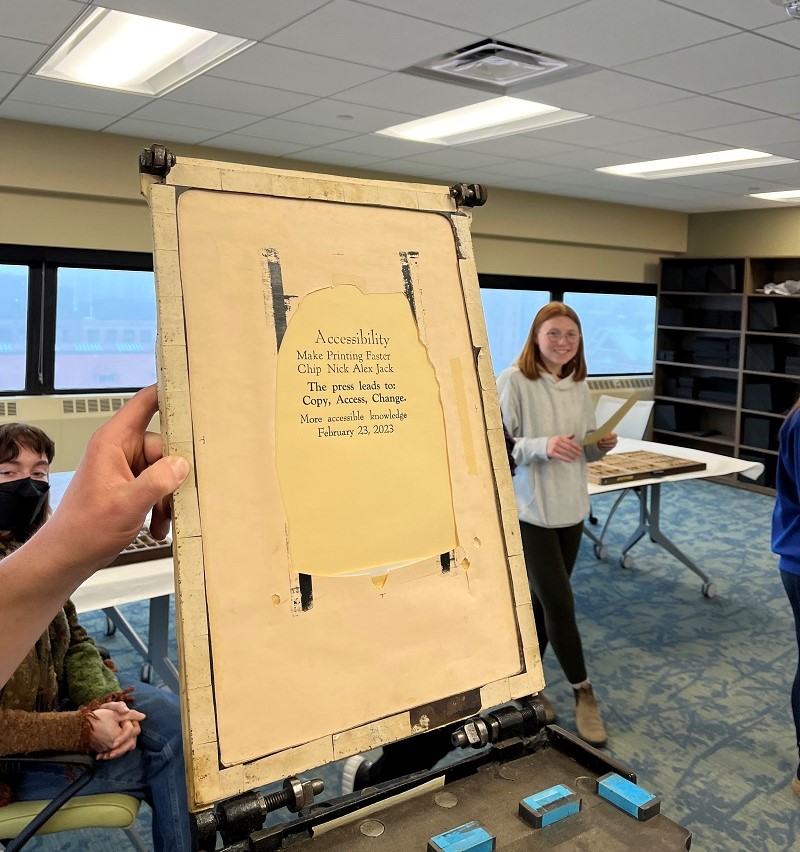The University of Michigan Library’s Book Arts Studio is a place for students, faculty, and the community to learn and practice the craft of letterpress printing, offering the opportunity to engage in other related activities, such as bookbinding and the book arts. During its regular hours, the Studio is a space to learn independently and explore artistic and research ideas. Additionally, throughout the semester the Studio offers instructional sessions to U of M students as part of their courses, providing practicable knowledge on various aspects of the production of a book. In fact, what is taught in these hands-on sessions can be useful to those interested in book history, an area of research that emphasizes the role of books as artifacts: their materiality can reveal how a particular text was produced, transmitted, and received.
Last semester, we had the opportunity to put into practice some of the methodological principles of book history while working with the students of the course, “The Bible as Material Object,” taught by Deborah Forger (Middle East Studies). In two hands-on workshops, we explored the impact of early printing culture on the making and reception of the Bible in the fifteenth and sixteenth centuries. Firstly, the students had the opportunity to examine early printed Bibles, beginning with a leaf from a copy of the edition of the Bible printed by Johann Gutenberg in Mainz (Germany) in 1454. Next to it were other early-printed Bibles, some displaying the Latin Vulgate, with and without printed annotations, and others containing landmark translations of the New Testament, like the first edition of Erasmus of Rotterdam’s Latin version, which had an extraordinary influence on the Reformation: Novum Instrumentum omne, diligenter ab Erasmo Roterodamo recognitum & emendatum. Basel: Johann Froben, 1516.

The letter by Pope Leo X endorsing the translation was printed as a Preface. Erasmus often mentioned this letter in correspondence with his friends to justify his changes to the Vulgate version. A former owner playfully drew three weasels, which might represent the coat of arms of the Wesel family. Novum Instrumentum omne, diligenter ab Erasmo Roterodamo recognitum & emendatum. Basel: Johann Froben, 1516
In the second workshop, which was conducted by Kyle Clark, the students learned about the anatomy of metal type through a video showing the casting of type and a replica of a hand mould used for casting type. But the greater part of Kyle's workshop was devoted to a printing exercise designed as an insight into the technical complexities of movable-type printing, Gutenberg’s great invention.
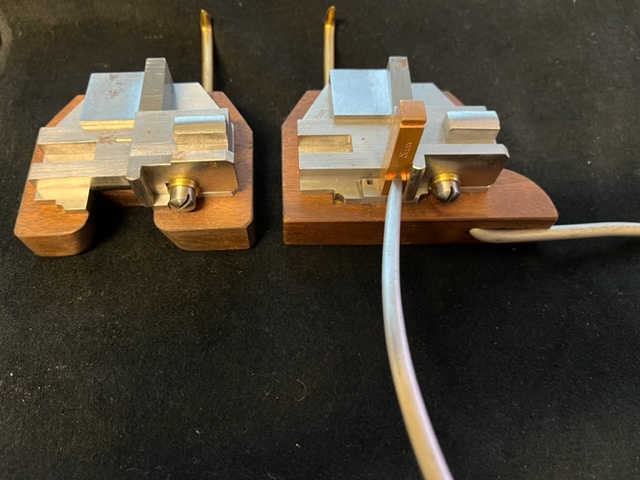
The two halves of the hand mould showing a matrix, which is held in place by the spring. Facsimile reproduction made by Stanley Nelson and based on engravings from the eighteenth-century French Encyclopédie
The class was broken into four small groups, each with its own case of lead type and letterpress typesetting tools. Each group was prompted to come up with a few lines of type inspired by some of the main themes covered in class. For instance, how would you summarize the impact of printing on Western society from the fifteenth century onwards?

The Presentation Space at the Special Collections Research Center
The students used a composing stick to set each of the lines, which were eventually arranged in a paragraph locked into a form that was placed on the bed of the Library’s Albion Press.
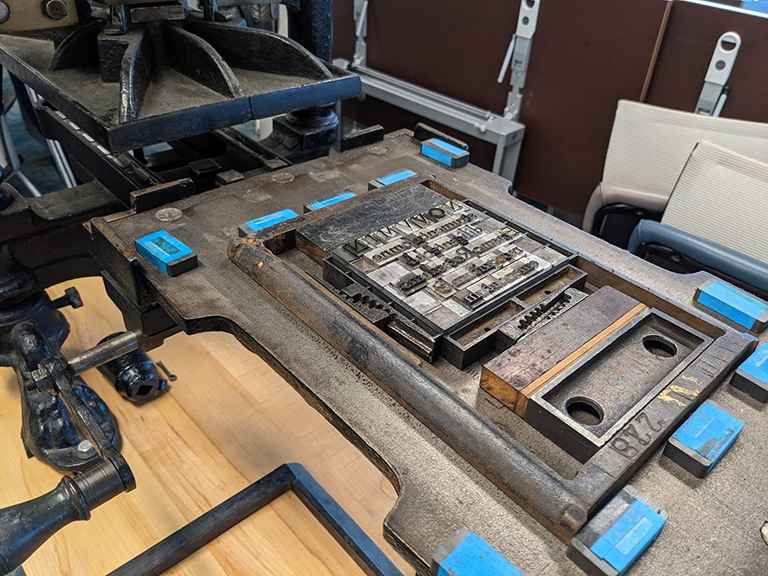
A type form positioned on the bed of the Library’s Albion printing press
Next, students took turns to engage with the different steps involving presswork: the printing paper was laid upon the paper surface of the tympan, which was then further secured by the frisket, a metal frame hinged to the top of the tympan, and covered with thick paper that has been cut with a hole to allow the inked type to print through.
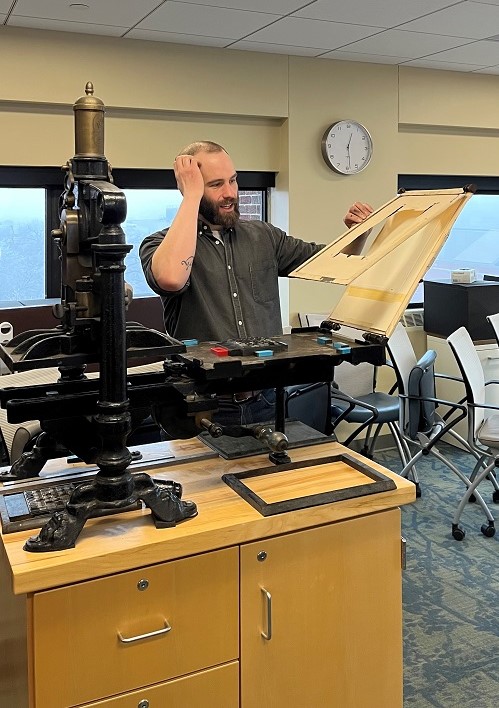
Kyle shows students how to operate the tympan and frisket of the Albion press
Then, tympan and frisket were folded down together on to the inked form, under the platen, thus all being ready for the student to pull the bar of the press in order to to bring the platen down to the form and produce a single piece of printing, the first copy of what could be an edition of hundreds or even thousands of copies that could be read by as many readers.
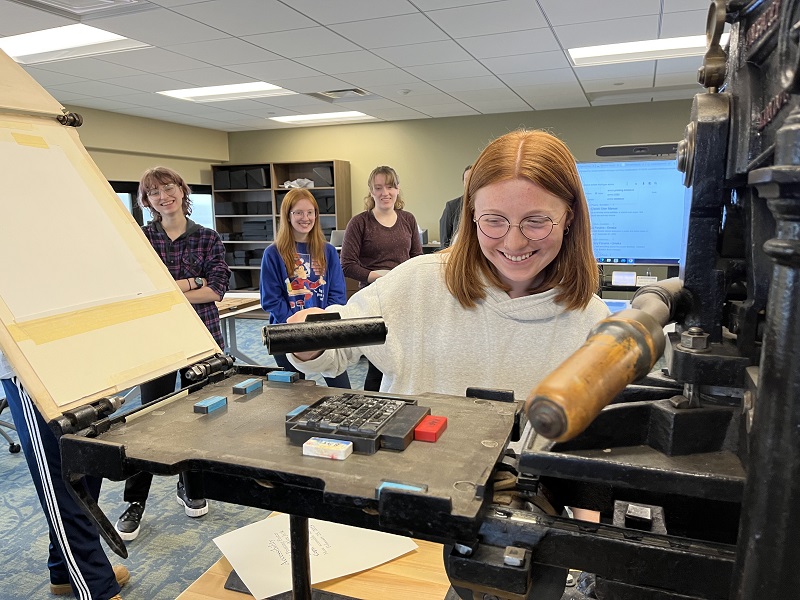
A student inks the form
Pablo Alvarez, Curator (Special Collections Research Center)
Kyle Clark, Conservation technician & Instructor (Preservation & Conservation)
